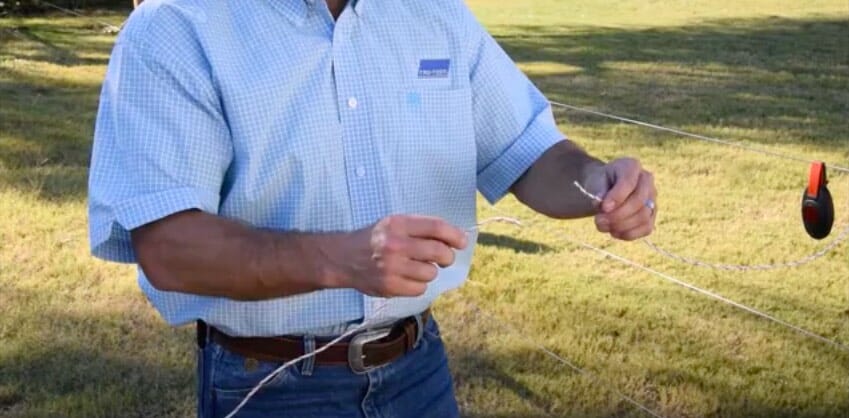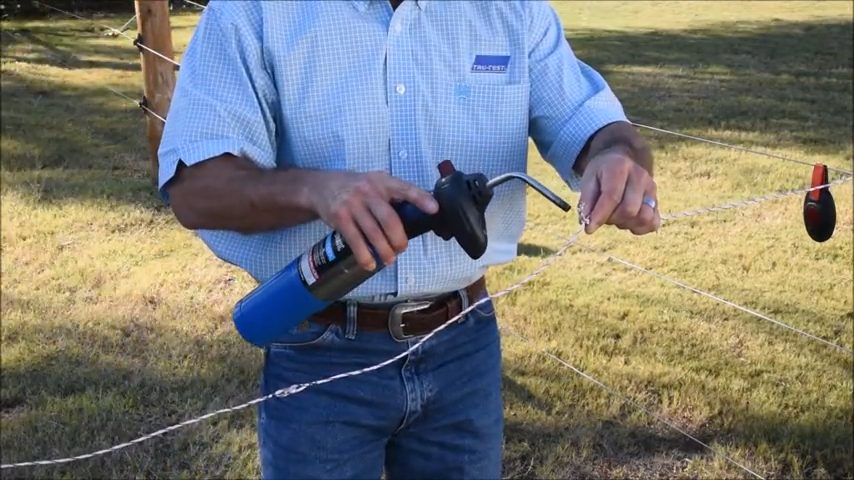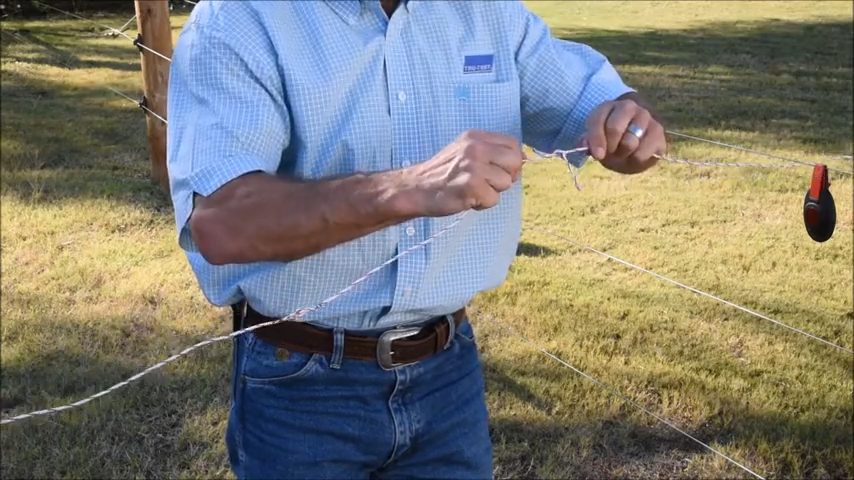How to Connect a Poly Rope Electric Fence? (Easy Steps)

Are you considering installing an electric fence to keep your property safe and have chosen a poly rope electric fence but don’t know where to get started? If so, as an electrician who has connected this type of fence many times before, I’ll guide you through the process.
In general, to connect a poly rope electric fence, you need to:
- Grab the two wires or the broken pieces of the poly rope that you want to connect
- Tie the two together to form a nice knot
- Weld the knot
- Twist the welded sections of the knot upon its length or the rope
I will dive into more detail with the images below.
How to Connect a Poly Rope
Step 1 – Weld the Wires
Grab the two wires or the broken pieces of the poly rope that you want to connect. Tie the two up to form a nice knot.

Then if you don’t have a propane torch., use a regular lighter to weld or burn the pieces of poly rope together.

Ensure the stainless-steel section gets exposed.
Step 2 – Connect the Broken Poly Ropes
After burning off the coating, let the poly cool down – it will take only a few moments. Then, twist two-knot sections upon the poly wire to achieve a neat and sturdy connection.

More Tips
Steps for Splicing PolyWire
A crimping sleeve splice is necessary if you want a sturdy, long-lasting splice.
To perform this splice, you must:
- Cut off the fence’s power.
- To ensure the power is turned off, use a voltage tester.
- Place three crimping sleeves over one end of the poly wire while wearing gloves.
- Slide the second poly wire through the open slots on the sleeves while holding the sleeves on the first poly wire.
- Squeeze the sleeves tightly with the crimper tool to establish a solid connection.
- By pulling on both ends to see if the poly wire slides out, you can gauge the durability of a sleeve.
- Connect the fence’s power. Check the voltage levels on each side of the splice using the voltage tester. You’re not obtaining a good connection and might need to redo the splice if one side is noticeably lower.
FAQs
Why is there a need for splices?
Electric fencing needs splices for two main reasons.
1. To lengthen the fence. You cannot secure and seal off a paddock without splicing. When one spool of electric poly rope runs out, splices are required, but the fence still requires an extension. They enable poly rope connection between spools.
2. To fix broken poly rope. The best way to do that is to create a splice.
3. Various issues can cause the poly rope to break. Some are:
– Falling objects
– Debris from trees and shrubbery
– Stress brought on by confined livestock
Why do poly rope splices work?
Typically, a group of Crimping Sleeves, which come in packs of 25, are used to splice poly wire. These conductive metal fittings are made to re-establish an electrical connection between two polywire components.
They accomplish this by interlocking the two sides and allowing the conductors of the polywire to come into contact. The electrical connection is reestablished via direct contact.
The clamping action produced by the crimping sleeves holds the poly wires in place. At least three crimping sleeves should be used for each splice to create a reliable connection.
The sleeves grasp the polywire and establish the required electrical connection as they are compressed shut. Polywire is also fastened to a fence line’s end post using crimping sleeves.
How can I splice poly wire without a crimping tool?
Bind the ends of the polywire together as a temporary fix if you don’t immediately have access to crimping sleeves or a crimping tool.
The electrical connection between the two sides of the electric fence will be restored by doing so with several knots.
But beware—knotting your polywire should only be a temporary solution. If your cattle regularly put your knots to the test, they can slip or break.
Video Reference
Patriot North America
